The State of SanDisk
by Kristian Vättö on December 5, 2014 8:00 AM EST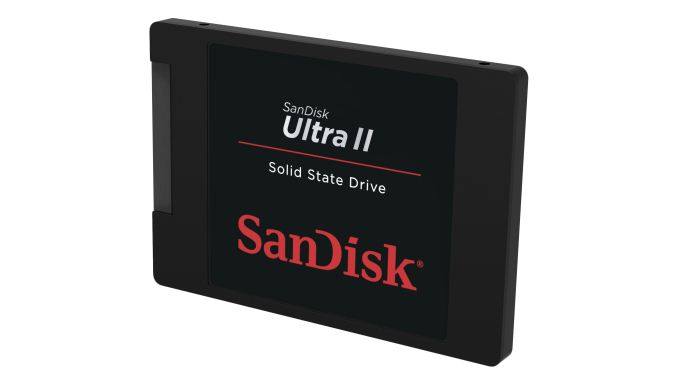
Back at Flash Memory Summit I had the opportunity to meet with all the key people at SanDisk. There is a lot going on at SanDisk at the moment with the Fusion-io acquisition, TLC NAND, and other things, so I figured I would write a piece that outlines SanDisk's current situation and what they're planning for the future.
I'll start with the client side. For SanDisk the big topic at this year's Flash Memory Summit was TLC NAND and we were given a sneak peek of the SanDisk Ultra II back at the show, which was then released a few weeks later. Since we have already reviewed the Ultra II, I'm not going to talk about the drive itself and its technical merits, but there are a few things that Kevin Conley, senior vice president and general manager for SanDisk's client business brought up about TLC and the client market in general.
I'm sure most of our long-time readers remember how SSD prices plummeted between 2010 and 2012. The reason for that wasn't a breakthrough in NAND technology, but merely the fact that all manufacturers increased their manufacturing capacity with the expectation of exponential NAND demand growth. As you can see in the graph above, the industry bit growth was over 60% year-over-year between 2010 and 2012, which lead to oversupply in the market and deflated the prices.
The reason why all NAND manufacturers invested so heavily on capacity increases was the popularity of smartphones and tablets; it was expected that the average storage capacity would increase over time. Basically, the NAND manufacturers assumed that decreases in NAND prices due to smaller lithographies would translate to higher capacity smartphones and tablets, but in fact the mobile companies chose to save on onboard storage and invest in other components instead (camera, SoC, etc.).
It's only been recently that smartphone and tablet manufacturers have started to increase the internal NAND and offer higher capacity models (e.g. the 128GB iPhone 6/6+), but even today the majority of devices are shipping with 16GB, which is the same capacity that the low-end iPhone 3GS had when it was introduced in 2009. Of course a large reason for the reduced sales of higher capacity smartphones/tablets has a lot to do with pricing, where 32GB devices often cost $100 more than the 16GB model.
Since the NAND manufacturers are now adding fab space at a slower pace, they are looking for alternate ways to increase bit growth and scale costs down – and that's where TLC kicks in. Because TLC packs in 50% more bits than MLC (three bits per cell instead of two), increasing the share of TLC production is an efficient way to boost bit growth without additional fab investments.
Currently about 45-50% of SanDisk's NAND production is TLC and by next year TLC will be overtaking MLC in terms of production volume. Note that SanDisk will have 3D NAND ready in 2016, so the graph doesn't imply that SanDisk will move to TLC-only production in 2017 – it is just the 2D NAND production moving to TLC since it will mostly be used in applications like USB flash drives and other low cost devices, while 3D NAND will be used in SSDs.
TLC will also be one of the driving forces behind average capacity increase. The main obstacle in SSD adoption is obviously the cost per gigabyte, and the lower production costs of TLC will help to bring the prices down. I think it's too early to say what kind of impact TLC will have on prices because currently there are only two drives available (SanDisk's Ultra II and Samsung's 840 EVO), but once more OEMs are ready with their TLC SSDs later this year and early next year, I believe we will see more aggressive pricing.
One of SanDisk's presentations at the show had a very interesting slide about the company's internal SSD deployment program. The question that is often debated when it comes to SSD endurance is the number of gigabytes that a user writes per day. There aren't really any studies with large sample sizes, but SanDisk's own study provides an interesting insight into typical office workloads.
What the data shows is that a typical office user only writes about 7GB per day on average and the number of people that write over 20GB is only a few percent, so very few users actually need more endurance than what TLC SSDs can offer (~20GB/day). Of course, everyone's usage is different and I doubt SanDisk's data takes e.g. media professionals properly into account, but it is still interesting and valuable data nonetheless.
Another thing I discussed with SanDisk was the obstacles for higher SSD adoption rate. While there is growth, the attach rate in the consumer space is still fairly modest and will remain as such for the next few years at least. Price is obviously one of the most important factors as hard drives are still an order of magnitude cheaper when measured in price per gigabyte, but I'm not sure if absolute price and capacity are the only hurdles anymore. I mean, 256GB is more than sufficient for the majority of users – especially now that we live in the era of Netflix and Spotify – and at ~$100 it's fairly affordable, so I think we have reached a point where the price is no longer the barrier preventing users from upgrading to SSDs.
This is actually the part where we ask for your, our readers, help. What is it that we or manufacturers like SanDisk could do to boost the SSD penetration in the market? Would live demonstrations at malls and other public places help? Or upgrade programs where you could take your PC to a store and they would do the upgrade there for you? Let us know your ideas in the comment section below and I'll make sure to bring them up with SanDisk and other SSD manufacturers. Remember that we are talking about the masses here, so think about your parents for instance – what would it take for them or other people who are not very comfortable around computers to upgrade their PCs with an SSD?
The one huge problem is of course the PC OEMs and convincing them to adopt SSDs for mainstream laptops. The race to the bottom practically killed the profits in the PC industry, which is why most of the mainstream (~$400-600) laptops have such a bad user experience (low-res TN panels, cheap plastic chassis, etc...). With already razor thin margins, the OEMs are very hesitant about increasing the BOMs and taking the risk of cutting their already-near-zero margins with SSDs. I know SanDisk and other SSD OEMs have tried to lobby SSDs to the PC OEMs as much as possible, but anything that adds cost gets a highly negative response from the PC OEMs.


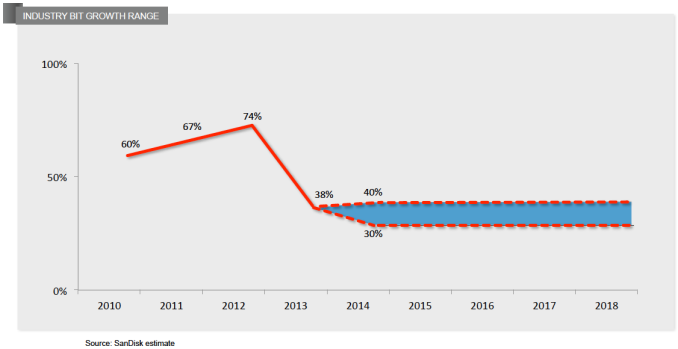
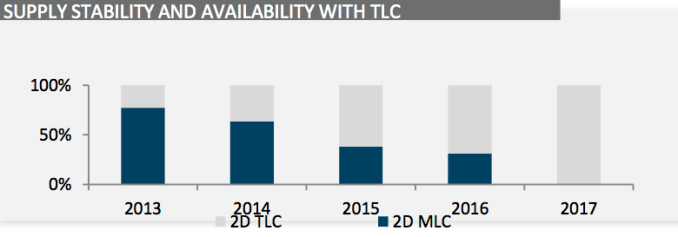
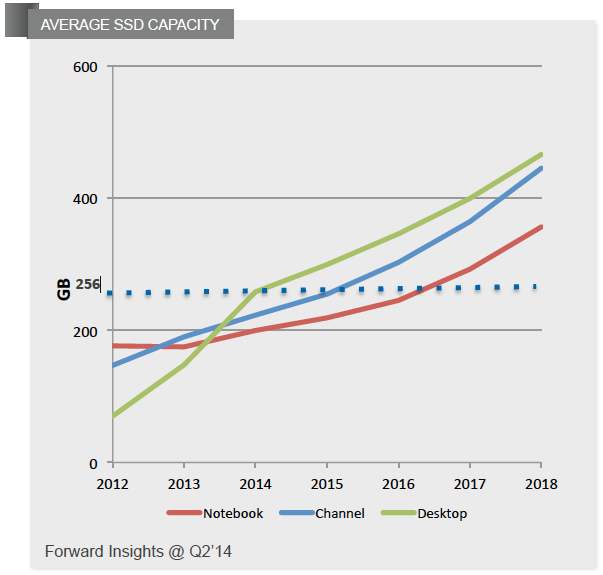
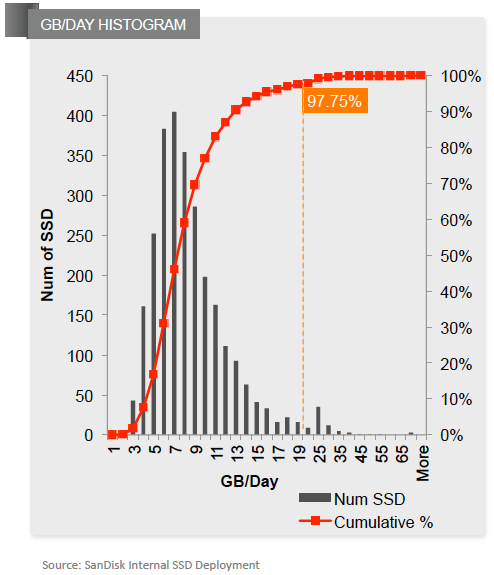









132 Comments
View All Comments
Negger - Saturday, December 6, 2014 - link
If companies like Sandisk want to grow their market share they need to provide better support to their end users. I have yet to see Sandisk provide a 2.5 to 3.5 bracket with an SSD, even though it's a $1 part with free shipping on ebay. Look at the crummy software Sandisk gives with their SSDS. The Sandisk SSD Dashboard is among the worst I have ever seen on Windows. It requires a minimum screen resolutions, it really shouldn't for what it actually does. It doesn't accurately detect firmware updates, and erroneously marks older drives bad. Sandisk is also extremly slow to provide firmware updates to their SSDs. It took six months to fix a TRIM error bug that was well documented and I get the feeling the only reason they bothered patching it was because of customer uproar on their forums and other forums. Sandisk seems to orphan their older SSDs in terms of firmware, and the overall experience buying a Sandisk product is underwhelming. The packaging feels like a small deck of playing cars and the labeling itself looks no-name. Put a holographic sticker or something on it for chrissake so it doesn't look so much like an off-brand. I realize most of Sandisk's customers are large OEMs and wholesalers, but the end user experience is what will drive the sales. There is a lot of weight in IT hobbyist and professional channels and their brand loyalty, many companies live or die by their reputation.jameskatt - Saturday, December 6, 2014 - link
Interesting. Consumers - other than Apple customers - can't get SSDs because Manufacturers don't want to risk their bottom of the barrel profit margins by using higher dost SSDs.The only way SSD manufacturers can get more SSDs used is to:
1. Increase Apple computer sales
2. Lower SSD prices more to the point that they are equivalent to hard drive prices.
Duken4evr1 - Saturday, December 6, 2014 - link
It is an admittedly smaller market perhaps, but SSDs make wonderful upgrades for older computers and particularly laptops. Older laptops with a C2D processor are "enough" for most users, even though they are 7 years old. The laptop I am typing this on is a 7 year old Lenovo R61 with an SSD in it. Gotta love the old Lenovos, they are built like tanks. Adding an SSD to Windows 7 and 4GB of RAM to the old workhorse makes it more responsive than my new work provided i5 laptop with a mechanical hard drive. Thus fortified, the old Lenovo workhorse will probably run another 8 years.PubFiction - Saturday, December 6, 2014 - link
One of the biggest problems with OEM SSD adoption is that OEMs simply do not offer well configured laptops. What I mean is they have purposely screwed over medium level laptops to try to force people up into higher end laptops. This technique is called upselling. Almost every manufacturer does this. And the same exact problem also applies to other components. We as enthusasts often know what a good value setup is. IE one that cost a moderate amount of money but gives you good bang for your buck. Interestingly go see if you can configure any major OEMs laptop to look like what you would pick. I bet you will find it hard or not possible at all. Instread you will be forced to upgrade past what you want to something higher for a lot more money.Now if you want to upgrade to an SSD the next problem is that it will cost you an arm and a leg that doesn't even make sense. If and SSD is selling for $100 one newegg the OEM will charge you $150 or more to upgrade. The kicker is they take your hard drive away. So it didn't cost them $150 to give you that SSD in fact they should be buying it cheaper they just made a lot more profit lets say $90, and they paid $50 for the hard drive so the net difference is $40 but instead of charging you $60 or $80 for the upgrade they screw you over with a $150 upgrade. As long as OEMs keep trying to milk higher profit out of upgrades people are going to be shy about it. OEMs are still tying to make SSDs a feature of premium upgrades and as long as they continue that SSDs will not deploy as mainstream.
Cerb - Sunday, December 7, 2014 - link
"What is it that we or manufacturers like SanDisk could do to boost the SSD penetration in the market?"Having not read any other comments: get PC OEM's heads collectively out of...um, the sand. Yeah, the sand :). Apple seems to be the only one with sense (hmm, and look at their sales and margins...coincidence?). Even if you want an SSD, many series won't have the option, or the cost will be outrageous for the size, as an upgrade. Where I work, we're buying SSDs separately, and cloning the HDDs, after resizing the partitions, because the cost difference is just so huge, and/or an SSD is not an option at all, and/or an SSD will add weeks of delay to shipping. Much like a better display, I see no good reason for SSDs, if not in a base model, to not at least be in each middle tier and higher of any given series. At our normal prices, the costs are less than double that of an HDD, typically.
Users may appreciate one once they get it, but they don't have a clue about the technology, and most I deal with don't want to get one. They just want it to work, and be faster than their old one. The demo systems at places like Best Buy need to have them , at the least, but to make them sing and dance, they also need to not have all the regular junk software running. An HDD system of similar specs beside it might be good, too. Some users will always get cheap, but others simply aren't going to pay extra for a smaller drive, when they don't see why they might want it.
Christopher33 - Sunday, December 7, 2014 - link
"This is actually the part where we ask for your, our readers, help. What is it that we or manufacturers like SanDisk could do to boost the SSD penetration in the market?"I've bought 1TB EVO 840, and I would never, ever made such mistake again. I would buy 840 PRO 512 instead, and currently I'm searching for old SSDs, that had very short access times. My Dell's PM 830 (830 Sammy) 128GB is "doing circles" while EVO (yes... after FW update) is noticeably slower (yes, I am VM user). I'm currently looking only into consumer SLC (4KB 1QD super high IOPS) SSDs like Fujitsu FSXtreme 240GB SLC. EVO managed SSD-like bechavior only for a month. TLC is not (and never will be) and option for enthusiast.
Primum - Sunday, December 7, 2014 - link
My office has only just picked up its first two desktops with SSDs from Dell. They've been given to the serial offenders who forget to save things to the server and save everything locally. The solution? Tiny SSDs (120GB or less I think) to encourage them to do so. Sadly despite asking since I started I'm still on a 5400rpm HDD. Average start up time (to a point where work can happen): 5 minutes. The one they just replaced took closer to 10 minutes. I got in a full round of drinks for everyone before it started up most days.Zertzable - Sunday, December 7, 2014 - link
I believe the biggest barrier is actually OEMs.Pair a Core i3 with a 128/256GB SSD and, for the vast majority of mainstream users, it'll feel far better than an i7 with a huge, slow drive. I'm fairly certain one of the main reason people love their Mac's so much is simply the easy and enormous improvement to UX provided by SSD's. Most people won't notice the crappy build quality and screen, but what they will notice for sure is how slow their brand new laptop is, thanks to that 5400 RPM drive it came with.
The problem? In the mainstream PC space, big numbers and marketing sell. UX isn't even on the radar.
Wwhat - Sunday, December 7, 2014 - link
The only acceptable thing about the current TLC is that its competition drives down the price of real SSD drives.I think though that the manufacturers should be forced to include that a product uses TLC in the name, and have it clearly on the packaging.
Cerb - Sunday, December 7, 2014 - link
No such thing has happened.M500 240GB: $81
MX100 256GB: $105
Ultra Plus 256GB: $102
Ultra II 240GB: $107
840 Evo 250GB: $114
I don't particularly hate TLC, if implemented well (like the Ultra II), but when it can be 40% *MORE* than a similar MLC drive, why on Earth should I bother? It has so far been *MLC* drives, like the M500, and Ultra Plus, helping to drive down prices. TLCs are being sold for the same or higher prices, and have been since the Samsung 840's release. The 840 was not cheap, nor has the 840 Evo been, compared to typical M500 prices. Sandisk followed with lower price with the Ultra Plus. If you didn't catch sales, the 840, 840 Evo, and now Ultra II, have not been lower than other MLC drives, even discounting Sandforce integrators, from release to today.
TLC drives should be 15 or more cheaper, considering every day prices, before I would buy or recommend one to anyone, enthusiast or not. I bought an Ultra II this BF week, for example, and it's a nice snappy little drive. But, I would not have bought it without those sales, because I could get an MLC drive, that I know will *maintain* its access times well, instead (I must admit, Samsung and Sandisk both getting WA down to Sandforce levels, with no compression or dedupe, using pSLC, has basically removed the longevity issues, for all but the top few % of data abusers).